You’ve seen all of the cool shooting videos on Instagram and Facebook where someone runs around shooting fast while looking like an action hero, right?
Want to learn how to do it?
It’s easier than it looks!
The easiest way to “run and gun” is to get into competition shooting. Several of the most popular shooting sports today involve running and gunning with a pistol, and USPSA – United States Practical Shooting Association – is one of the most commonly found throughout the country.
It’s fun and exciting, and it’s understandable why you might be interested in trying it out.
Doesn’t it look like fun?Today, we’re going to walk you through picking a USPSA division to get started in so that you too can run around shooting stuff and having a blast at the range.
Table of Contents
Loading…
Recommended Guns for USPSA Beginners
First of all, most USPSA Newbies are going to start out in either Limited or Production, which makes it pretty easy to recommend guns…and best of all you very likely already have one of these on hand if you’ve been collecting handguns for any length of time
Recommended Guns:
- Beretta 92FS ($600)
- Glock 17 ($499)
- Glock 34 ($595)
- HK45 Tactical ($1,269)
- SIG P320 ($579)
- S&W Revolvers (Varies)
Any of these choices will serve you well for learning the ropes, and they’re all fine carry or home defense guns as well.
Getting Started in USPSA
Getting started in USPSA isn’t difficult, but in addition to learning the rules and the range etiquette, as well as the actual shooting part, you’ll need to figure out your gear. With eight divisions to divide up the different kinds of guns you can shoot in USPSA it can seem a little confusing.
Keep in mind that I won’t be covering all of the dirty details here, and there’s a reason for that: it’s not that important if you’re a new USPSA shooter.
Divisions are only important for roughly grouping competitors by the kind of gun they are shooting so that everyone in the same division will be using similar equipment.
Even among experienced competitors, there will be a broad range of gear and guns within the same division and at the end of the day…it’s about the shooter and not the equipment.
Worried about your equipment?
Don’t be!
Whether your equipment is “competitive” within a division doesn’t matter until after you’ve had a chance to learn the game.
If you show up at your first match knowing what kind of gun you have, how many magazines you own, and whether your gun has been modified at all, you can be placed into a division.
In USPSA, you’ll want a full-size or a larger compact pistol and at least three standard capacity magazines for it so that you can carry a minimum of 32-35 rounds on you between what’s loaded in your gun and what’s on your belt or even in your pockets. The rest is just details and you won’t need to stress about them at a local match.
If you’re a worrier or are more concerned about being prepared on your first day, this guide will get you on the right track. Lets look at a quick introduction to what all of the different divisions are, the gun-related gear you’ll need to shoot reasonably competitively in them, and a few pointers for getting set up.
USPSA Production Division
Not much more than a decade ago, Production was the new kid on the block in USPSA. Intended as a place for factory guns to compete without having to be lumped in with “race” guns, the Production division is a way for shooters to participate at a relatively low cost with a gun purchased over the counter and only relatively minor (or no) modifications.
That makes it accessible for many new shooters because they not only don’t need a custom gun, but probably already own a suitable firearm for their first few matches.
In fact, not only are modifications not encouraged in this division, many of them aren’t even allowed. Outside of purely cosmetic changes like custom paint jobs, almost all externally visible modifications are restricted in Production.
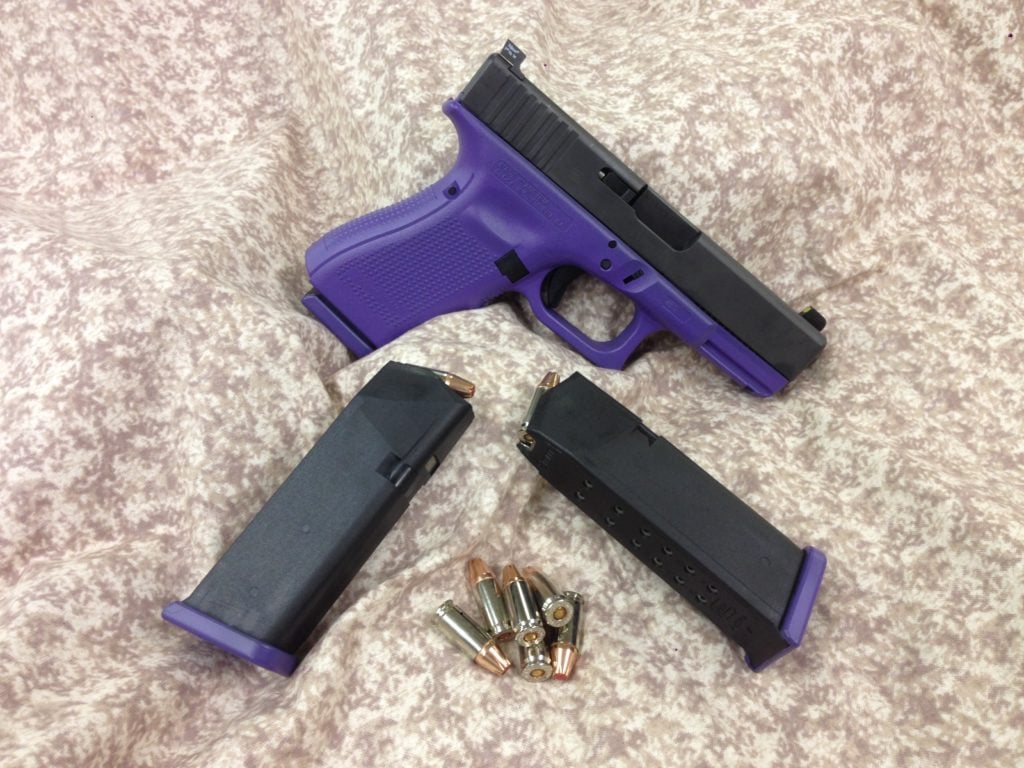
You can change your sights or add a limited amount of grip tape or stippling, and your gun can have internal gunsmithing to improve your trigger pull or your gun’s reliability, but you can’t do things like change your actual trigger for an all-new aftermarket part. And, of course, it’s perfectly okay to just run a completely stock gun straight out of the box.
There is a list of guns that can be shot in Production, but it includes most ordinary striker-, double-, and double-single action guns. It’s not just a place for beginners though – some of the top shooters in the sport make their home in Production because of the technical shooting problem-solving and gun-handling skills it requires to perform at a high level.
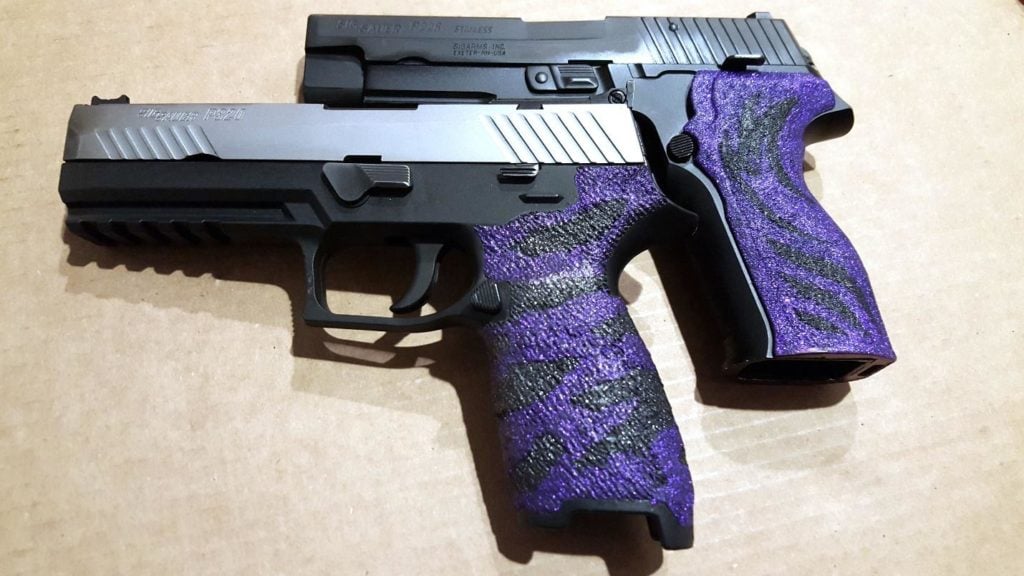
One of the biggest challenges in Production is that shooters are limited to ten rounds in each magazine.
That means that a new shooter should have a minimum of five magazines for their gun, and a way to carry at least four of them. Under the rules, all of those magazines must also be behind the hip bone on the side opposite to where the gun is carried – that means back pockets are okay, but front pockets are not, and magazine pouches (even cheap, mismatching ones) are better.
Fortunately, while you may need to invest in more magazines and pouches, any standard hard-sided, outside-the-waistband holster that attaches at the belt will probably be USPSA-legal as long as some portion of the grip is above the top of the belt and it’s not mounted too far away from it.
USPSA Limited Division
Next up is Limited Division.
Pistols that are too highly modified for Production division, or that otherwise don’t fit into the limitations for Production or the specialty divisions covered below fall into Limited.
In this division, just about anything without an optical sight works, whether it’s the Glock that’s been sent off for slide lightening or a custom 1911. A single-action, high capacity “race gun” shooting “major” power factor might seem the most competitive in Limited, but it’s not the only kind of gun that can do well – nor is it the only kind of Limited gun you’ll see at any match.
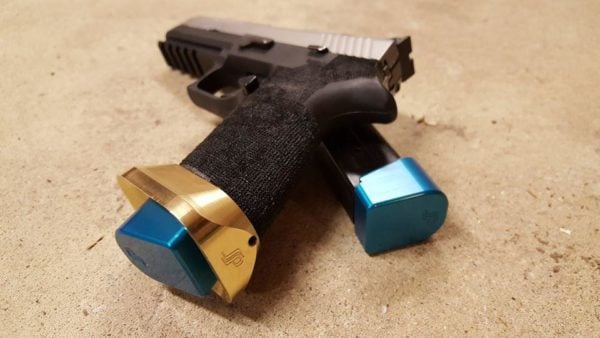
Major power factor means a bigger bullet moving faster. To reward the greater recoil this produce, and the lower capacity that usually results, shooters incur fewer penalties if they don’t hit the highest scoring zone on paper targets.
Major can be an advantage, but it isn’t always. Don’t let shooting minor against major scare you away from a division where both are allowed!
In fact, one of the best things about Limited is its “anything without an optic goes” attitude, because it’s almost impossible for a new shooter’s gun to not fit in here if nowhere else. Limited also only restricts magazine length, and allows magazines to be fully loaded.
Most factory magazines can be used in Limited, making it a great place to start if you only own a few magazines (at least three would still be best) or don’t have a lot of magazine carriers (having just two would be enough).
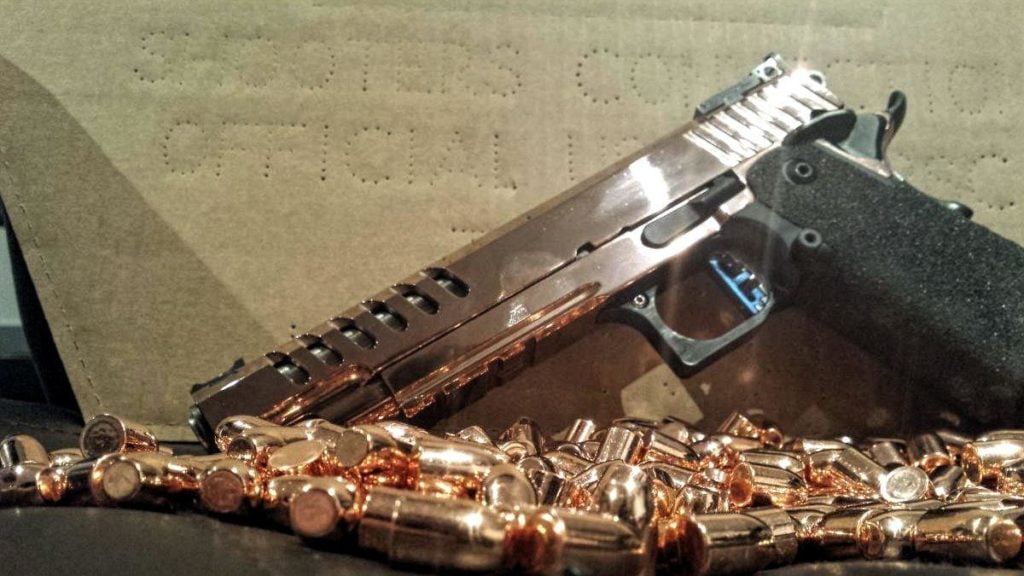
Limited has almost no restrictions on placement or type of magazine carrier or holster as long as they are on the belt, meaning you can stick magazines into front pockets or even holster your gun in appendix (AIWB) position.
You can’t, however, use a holster that is cross-draw or mounted behind you; it must be on your strong-side hip or in front of your hip on the strong side. The ability to fully load magazines and to holster in most positions can make Limited a good choice for people who want to practice with their carry gear.
Gabe White is a Master-class Limited shooter who uses a concealed AIWB holster and mag pouches.
USPSA Limited 10 Division
As you might have guessed by the name, Limited 10 is everything Limited is, except that magazines can only be loaded to ten rounds.
Limited 10, again like Limited, allows the shooter nearly complete freedom in where to wear magazine pouches and holsters, and in the types of holsters used. However, a shooter will need to carry as many magazines as a Production shooter (four or more), so the two or three magazine pouches that are sufficient for Limited won’t be enough here.
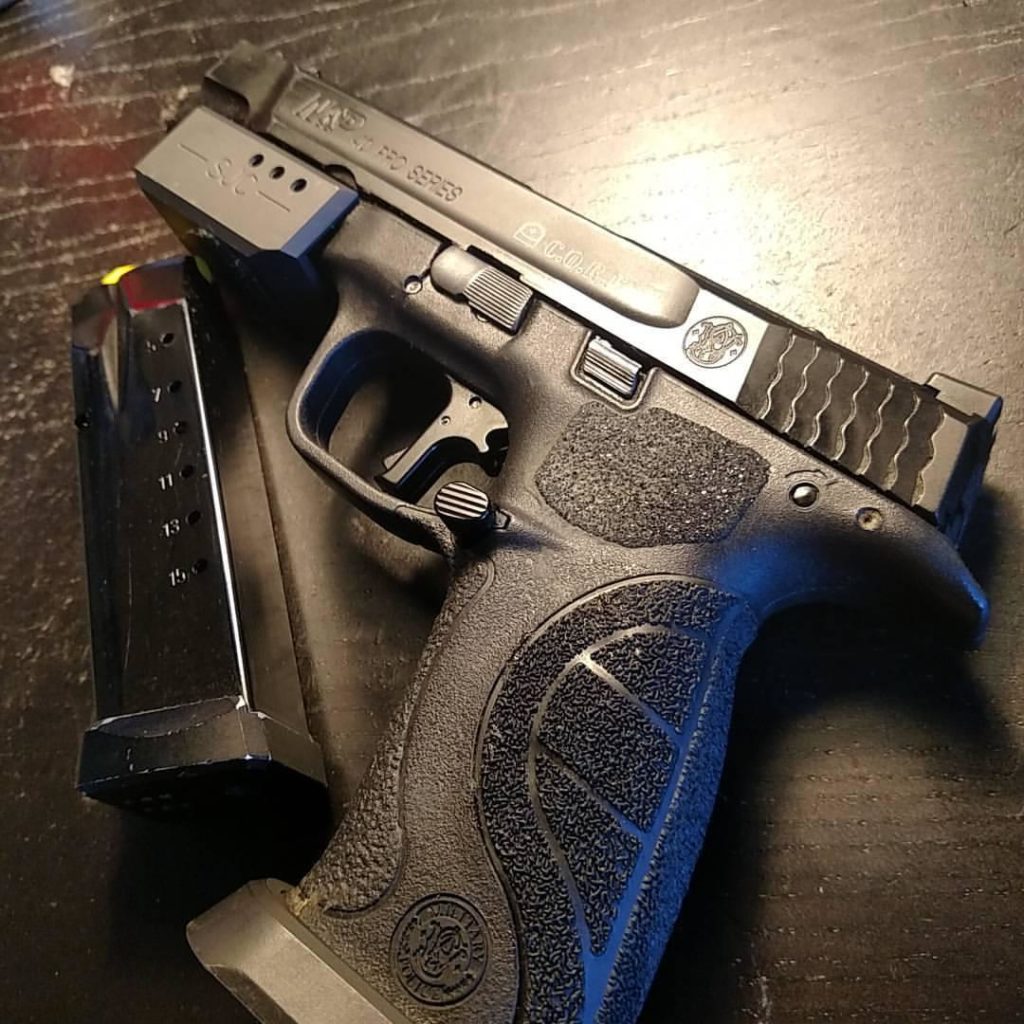
Relatively few competitors shoot in Limited 10, but there are still good reasons to land in this division. One of the most common is when a shooter is located in a state where there are magazine capacity limitations preventing the use of the larger magazines used in Limited, but she still wants to shoot a modified gun.
Another might be that larger magazines simply aren’t available for the shooter’s gun of choice, and he doesn’t want to compete against Limited shooters who wouldn’t need to reload as often.
A third reason might be that the shooter wants to shoot a gun too highly modified for Production or that shoots major power factor (as all Production shooters are scored as if shooting minor), but wants to maintain other features of a limited-capacity division.
USPSA Open Division
While Limited allows wide latitude in gun modifications and set-up, it still requires the use of iron sights.
Want to use an optical red-dot sight on top of your Limited gun? That will land you in the Open division.
As in Limited, there are a wide range of pistols used in Open, not to mention many different types of sight systems and variations in how they are attached.
However, in addition to the optical sight, Open also allows longer magazines and therefore higher capacity.
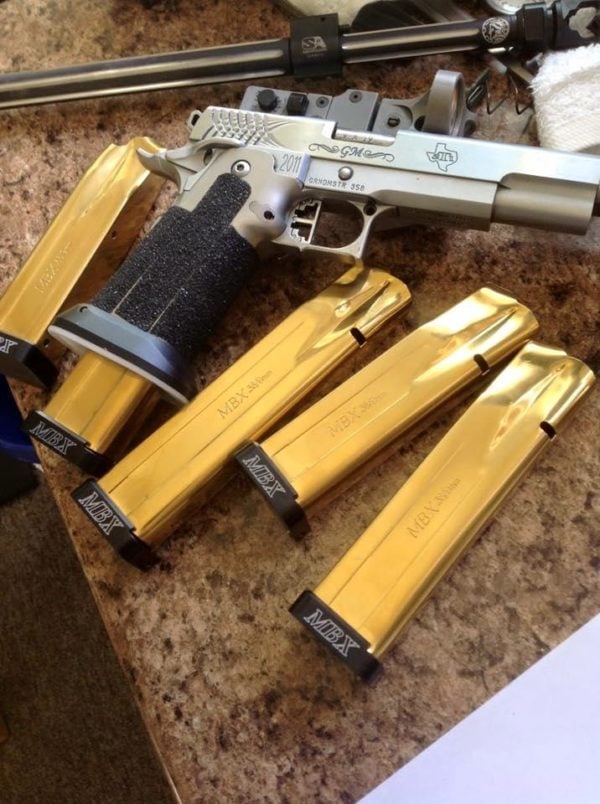
Open is the full “race gun” division in USPSA, and the one most people think of when they think that highly specialized and expensive “space guns” are necessary to compete.
They’re not, even in Open, but they can be a lot of fun if you like to test the limits of speed shooting a handgun.
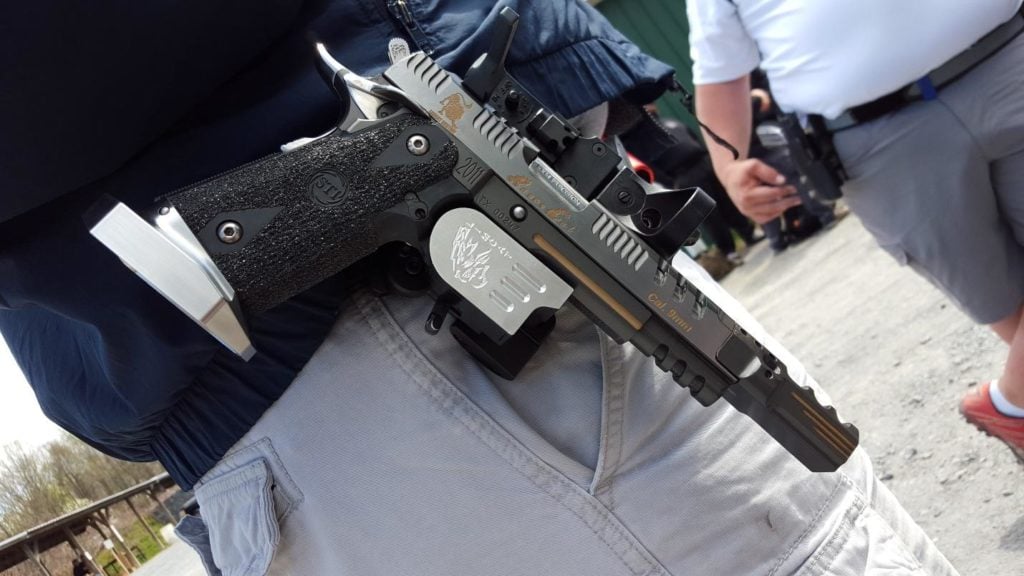
Open is like Limited and Limited 10 as far as magazine pouch and holster placement, as well as holster choice.
To further expand on what you’ll normally see in these divisions, “race” type holsters that don’t fully enclose the gun are acceptable so long as they fully protect the trigger and have a way to prevent the gun from actually falling out of the holster on its own.
The holster can be placed at or in front of the strong-side hip, point the muzzle forward, and drop the grip below the belt line, as long as it’s still attached to the belt. Similarly, magazine pouches can go anywhere on the belt and angled in any direction. They don’t even need to be pouches – magnets are okay too.
USPSA Carry Optics Division
There is another option available who want to shoot with a red dot besides Open, and that is the relatively new and still provisional Carry Optics division.
While it’s still technically in the testing phase, there is every expectation that Carry Optics will become a permanent division and a popular place to play for Production shooters looking to dip a toe into the red dot world, especially as several major manufacturers now make guns factory-equipped with or to support an optic.
It’s also a good division for those who want to make use of the advantages of an optical sight, especially for aging eyes, without the full investment into a complete Open gun.
Carry Optics is sort a cross between Open and Production, with a little bit of Limited thrown in. Optical sights are permitted, but only if they are mounted to the slide of the pistol.
The base gun generally must be Production-legal, including being on the Production list and having limited modifications. However, Carry Optics allows more stippling than allowed in Production and allows fully-loaded extended magazines up to what is allowed in Limited.
Carry Optics follows the same rules as Production as to types and placement of holsters and magazine pouches although you will, of course, need fewer magazines and pouches with the higher capacity permitted.
USPSA Single Stack Division
Moving back to more standard guns, Single Stack is perhaps the most classic of all of the USPSA divisions. It’s where you’ll want to be if you want to shoot a 1911. Series 70 and series 80 are acceptable, as well as calibers other than .45 ACP, but they must be metal-framed, single-stack 1911s with standard iron sights on top.
While many people shoot off-the-shelf 1911s in Single Stack, it’s also the perfect home for that special custom 1911 that’s been sitting in your safe.
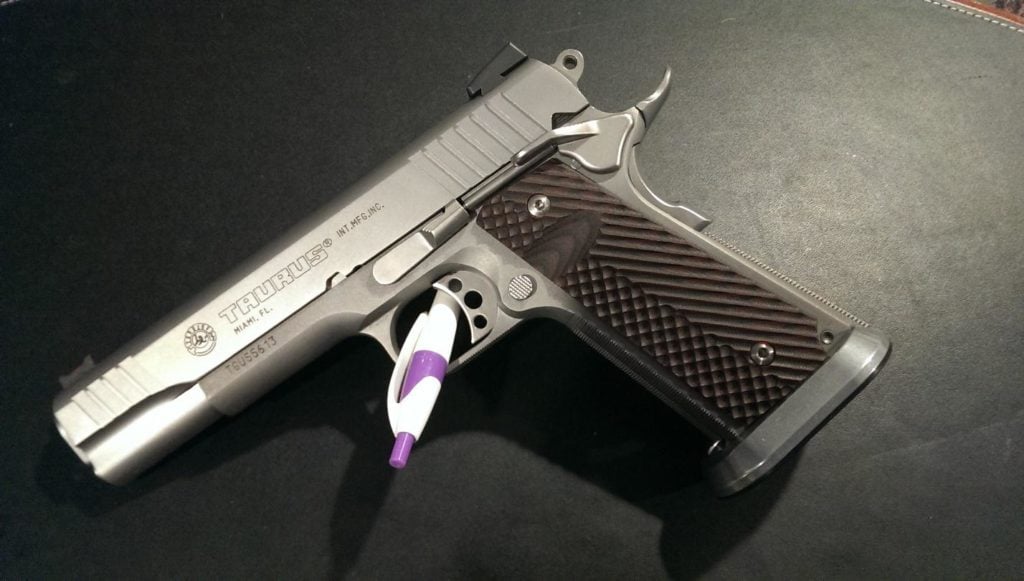
Capacity is limited in this division, to 8 rounds in the magazine for major power factor (.45 ACP, 10mm, some .40 S&W) and 10 rounds for minor (9mm, .38 super, and some .40 S&W).
That means the shooter must have the ability to carry anywhere from four all the way up to eight magazines, all within the same magazine pouch restrictions as Production and Carry Optics – behind the hip bone.
Holster style and placement are also limited to behind the hip bone in Single Stack, and for men, the entire grip must be over the top of the belt.
USPSA Revolver Division
Fans of older guns may also be interested in the Revolver division which, as its name indicates, is home of the wheelgun. Much like Single Stack, Revolver allows for both major and minor power factor, with varying capacity limits for each.
Revolver Major allows a maximum of six rounds in the gun at any time, and Revolver minor allows up to eight rounds. Either way, standard iron sights are required. In recent years, the eight-round 9mm revolver has been particularly popular in this division, though the division itself often sees few competitors overall.
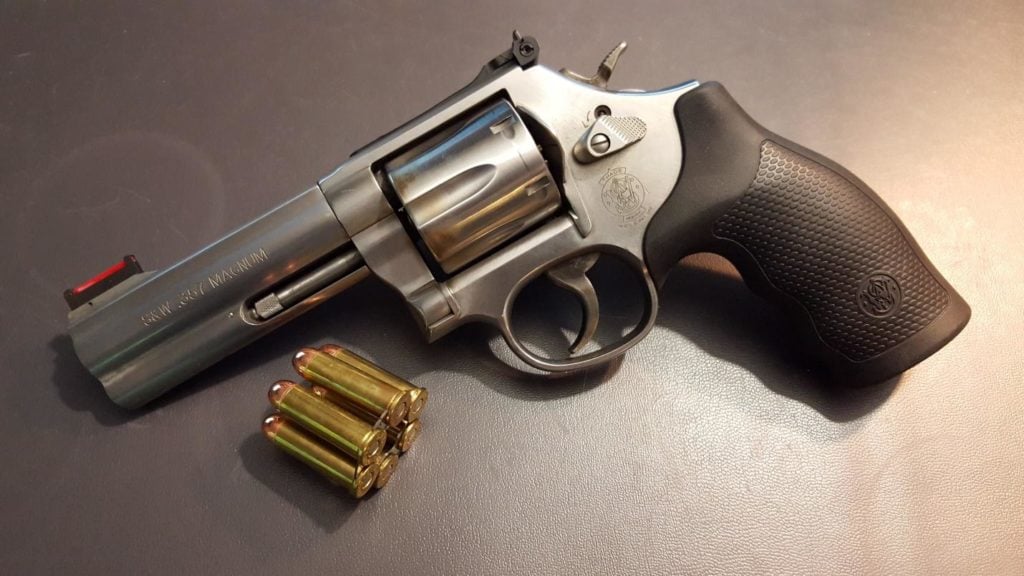
Regardless of power factor, Revolver shooters can opt to reload with any method she chooses, from loose rounds or speed strips to speed loaders or moonclips.
The devices used for reloading can be mounted anywhere on the belt but are normally placed right in front. Holsters follow the same rules as for Limited and related divisions, meaning that race holsters are permitted, as is placement behind or in front of the strong-side hip.
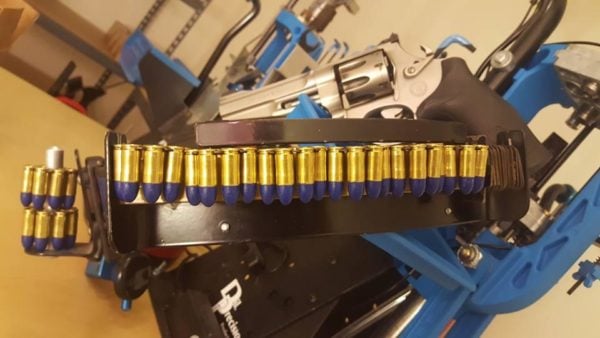
USPSA Pistol Cailber Carbine Division
Pistol Caliber Carbine (PCC) is the newest provisional division of USPSA and is very different from any of the others.
For starters, it’s a rifle division in a sport that is primarily focused on the pistol, though PCC guns, as the name implies, shoot pistol calibers.
PCC is where guns like 9mm AR-15s are welcome, with or without optics. Think of it like the super-Open division, where pretty much goes as long as it’s a rifle shooting a pistol caliber.

Somewhat obviously, PCC guns are not holstered; instead, there are some still-solidifying rules on how the guns can be transported around the range during a match.
Magazines are carried in belt-mounted pouches much like any other division, and there’s no restriction on where those are placed.
A word of warning if you’re interested in PCC – because it’s so new and different, not every USPSA club allows it at their matches.
Conclusion
Hopefully, that didn’t just confuse you more! Rest assured, you can pick any division and still have fun and learn a lot about shooting USPSA. As you get deeper into the game, you can optimize your setup and make sure you’re in line with the nitty gritty of the rules.
Consult the rulebook or ask a match director, range officer, or more seasoned shooter for more details.
And don’t forget – you aren’t stuck with your first choice! Lots of people move from division to division over time for all sorts of reasons ranging from boredom to money.
Interested in more than just pistol competition? Check out our guide to 3 Gun Nation!
Which division will you choose to start out with or to shoot? Do you have any more questions? Also check out our Editor’s Picks for our favorite gear such as gun belts, mags, and pistol red dots.

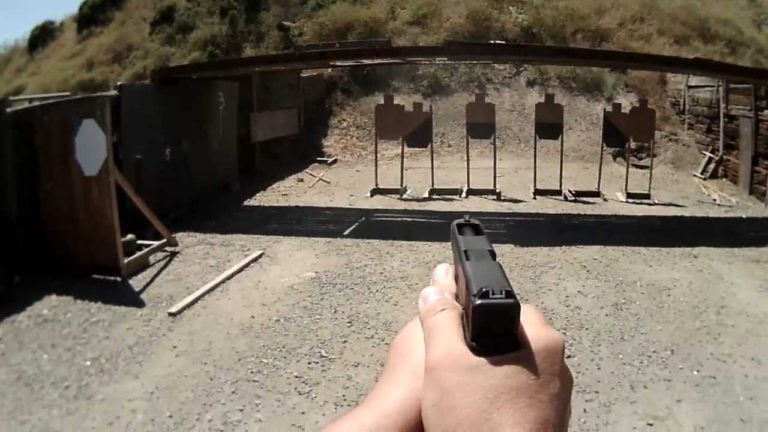
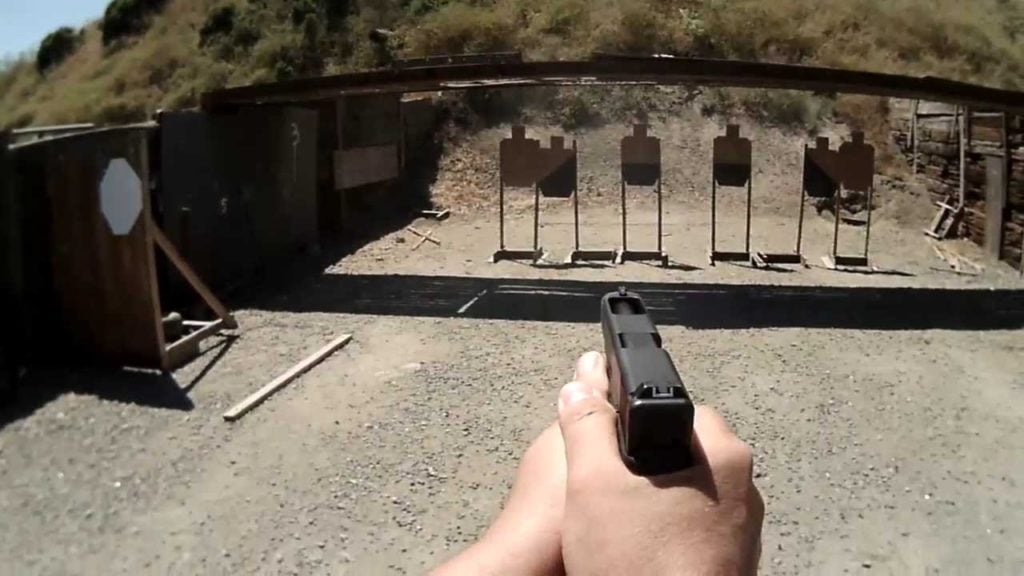







14 Leave a Reply
I wish that the rule book was not 121 pages long. Kind of a turn-off.
"Major power factor means a bigger bullet moving faster." - ummm, correct me if I am wrong but typically the bigger the caliber in a semi-auto handgun, say 9mm vs 40S&W vs 45ACP, the slower the bullet will go..?
I have a CZ 57 SP 01 Kadet 2 conversion, modified grips, and would like to reduce trigger pull with an internal trigger job. I am working to overcome the challenge of mounting a red dot on the Kadet. My question is, can i run in the carry optics division shooting a conversion or would i have to put it back to the factory 9mm configuration. TYIA.
For the limited 10 class you only need... 9mm 3 or 4 mags... Red dot on ar's... Basic semi auto 12 gauge??? How much ammo would you need for the ar's and shotguns
Ammo depends on the course of fire so it will depend on the event you are shooting. Some are fine with 150 AR, 50 pistol, and 20 shotgun while other events might require 500+ AR, 100+ pistol, 100+ shotgun.
Great info. I’m just getting into competitive shooting. As a woman I find it challenging and a bit intimidating but I’m drawn to it. I’ve joined the “The Well Armed Woman” local chapter and it’s been fun learning from other women who enjoy firearms. I’m going to go watch my first local USPSA match in September. Can’t wait. I’m currently shooting a Springfield XDM 525 in 9mm and I think production will be my starting point.
Thanks for the article. My brothers compete in USPSA & IDPA here in Florida, and I just joined IDPA, and am going to do my first match in July. I own an XD-M .40, but was nudged away from using the .40 S&W because there is no scoring "reward" for the recoil like .45 ACP, yet it's more challenging to shoot than 9mm. Can you offer some feedback? I wanted something the size of a Glock 19, (sans the Lego-like grip) and got a Walther PPQ on sale, and am using that as my competition gun, alongside the XD-M.
I've been shooting for 15 years (Army veteran), but am only now taking classes to expand beyond static-fire military training. My wife is getting into shooting, and we're excited to develop this into a mutual hobby/practical defensive skill. I've also two daughters, and I think your "Every girl should learn how to shoot" series will be beneficial for all the ladies at home. Thanks!
I have been shooting for many years and collecting guns my father and mother were coaches when I was growing up. I played six sports in high school college football and for pro football camps. I missing something and I think shooting competitions is something I would really enjoy. So I would like to find out more information about some of these competitions . Including maybe three gun. Thank you for your time any information you can give me would be helpful. I live on the north side of Houston Texas. Thank you for your help!
That article is in the pipeline - keep reading and it should come up in not too long.
I really want to do this now XD. Looks amazingly fun. Thanks for writing it.
It IS fun, and you should try it :)
Just gotta wait 4 more years..
Is there a restriction on magazine length in PCC division?
Great article! Thank you!
No restriction on magazine length or capacity in the current PCC provisional appendix!